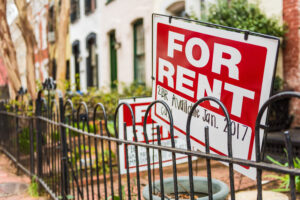This year, tenants’ activists within California have rallied to get rent control initiatives on the November 2018 ballot. As the deadline for ballot measures gets closer, activists in cities across the state have begun submitting their signatures for approval. While none of the proposed measures have officially made it to the ballot so far, below is an update on where California stands on their state and city-wide rent control measures.
What is Rent Control?
To recap – rent control (also known as rent stabilization) would allow local and/or state governments to control and regulate the rental amount you charge. While many states have legislation in place that ban rent control (California has the Costa-Hawkins Act), some local governments have been able to bypass this via rent stabilization ordinances. Additionally, there have been several initiatives to remove these state-wide bans (although none have been successful so far).
An Update on California’s Rent Control War
Within this past year, activists have doubled down on their efforts to put rent control on the November 2018 ballot. Since our last rent control update, tenants’ activists have submitted the signatures to qualify a state-wide ballot measure (called “The Housing Freeze”) that would:
- Allow rent caps on properties to be locked in place forever
- Open the door for rent control on single family homes and new construction
- Make it unclear what constitutes fair market value, which will lead to lawsuits.
- Grant new powers to regulatory bodies to impose or modify rent policies – without public oversight.
- Allow proponents to intervene in lawsuits with all their expenses paid by taxpayers – even if they lose.
To get involved in the California Apartment Association’s campaign to preserve the Costa-Hawkins Act, visit NoHousingFreeze.org.
Alongside this state-wide rent control initiative, tenants’ activists have been rallying to get local rent control initiatives on the ballot as well. As of May 29th, below is the current status of local rent control initiatives.
Activists in cities still collecting signatures: Pomona, Santa Ana, Santa Rosa, Glendale, Long Beach, and Sacramento.
Activists in cities that have submitted their signatures: National City, Santa Cruz, and Inglewood.
Activists in cities that have failed to meet the signature requirements: Pasadena.
Keep in mind that the ordinances proposed in each city differ. For example, the rent control proposal in Glendale caps annual rent increases at 4%, while the proposal for Pasadena caps increases at 4.5%. Beyond a difference in rent increase caps, some proposals (like Long Beach) also introduce ‘just cause’ eviction requirements and would require all landlords to pay an annual rental housing fee.
While it’s uncertain whether any of the state-wide or local initiatives will meet the signature requirements to be on the November 2018 ballot, it’s important to start preparing for some changes in the rental housing industry that are almost certain to happen within the next few years. Review the proposal for your local rent control initiative, and join the “No Housing Freeze” campaign to get involved. The battle has only just begun.







